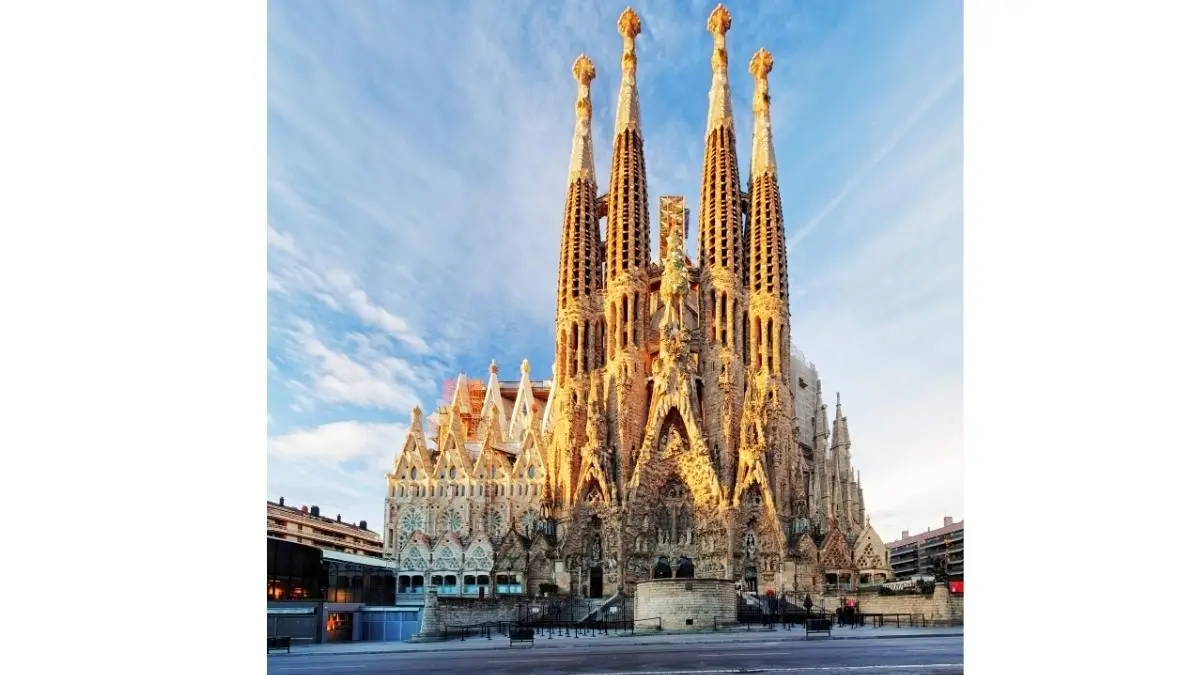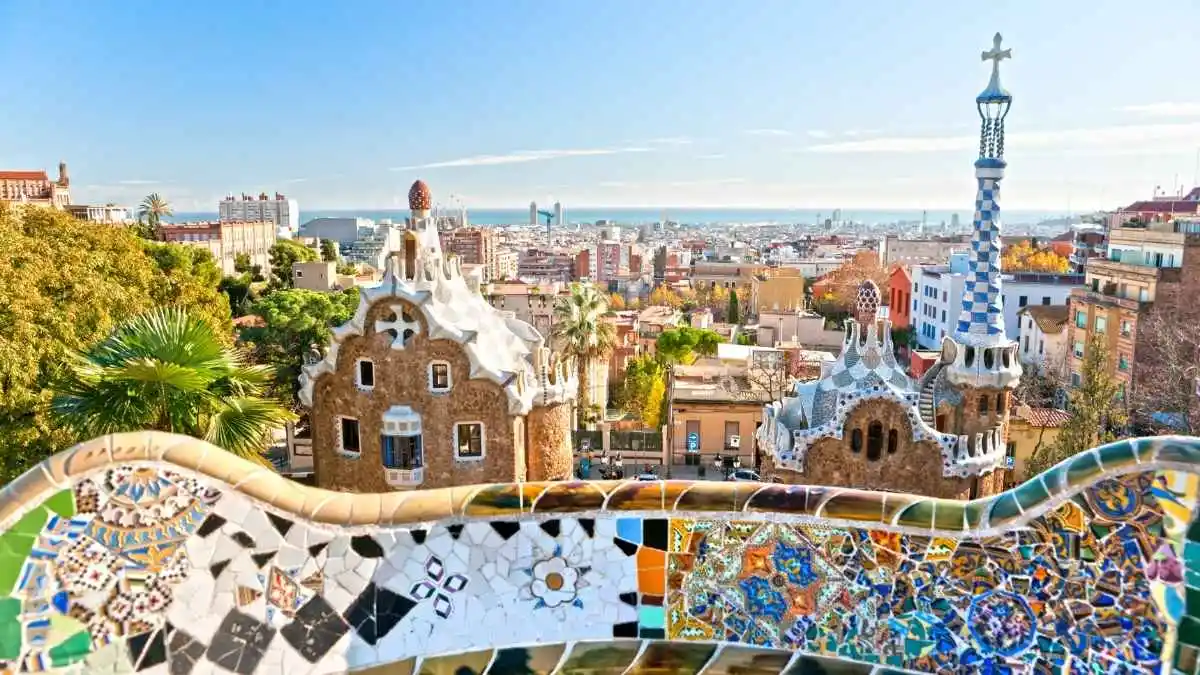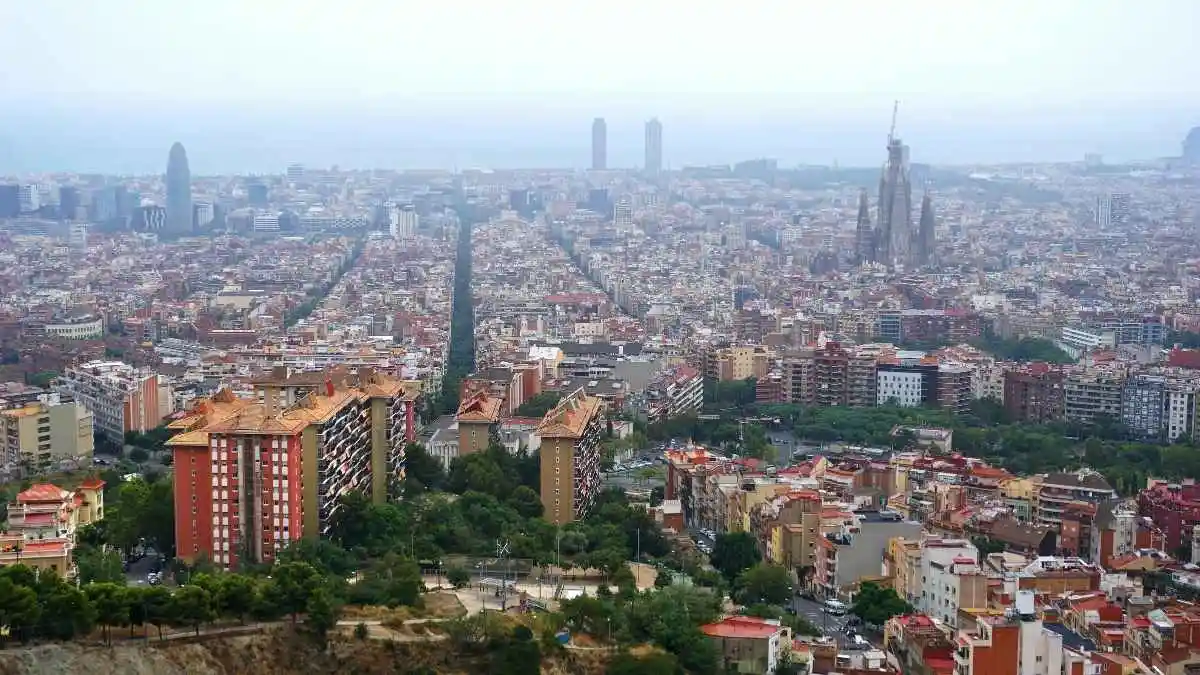A splash of cold water on a hot day can be refreshing. But on the streets of Barcelona, it’s a declaration of war. Locals are arming themselves with cheap plastic water guns and taking aim at tourists, not as a game, but as a desperate act of protest.
The city’s sun-drenched boulevards have become a battleground where residents feel they must fight to reclaim their home from the very industry that fuels its economy. What happens when a city’s success becomes its biggest threat?
The answer is unfolding in a chaotic, colorful, and deeply personal conflict, one squirt at a time, revealing a crisis that goes far beyond crowded streets and into the very soul of what it means to live in Europe’s most popular destinations.
The Splash Point

It was a hot Sunday in Barcelona. Tourists sat at an outdoor cafe, trying to enjoy their drinks. Suddenly, a woman shot a stream of water at them from a cheap plastic water pistol.
She was part of a marching crowd of over a thousand residents. This wasn’t just a summer game. It was a protest. Locals are calling it the “water gun wars.” It shows the city has had enough.
The scene was confusing. The “weapons” were not powerful water cannons. They were the small, cheap kind that don’t shoot very far.
For some tourists, the surprise spray was a nice way to cool off. An American visitor, Wanda Dorozenski, laughed after getting squirted. “That’s lovely, thank you sweetheart,” she said.
She knew the protesters were upset about something “very personal.” But not everyone felt that way. Nora Tsai, a tourist from Taiwan, said the attack scared and saddened her.
The playful feeling didn’t last long. The real anger underneath started to show. As the protesters marched, they did more than just spray bystanders.
Some emptied their water guns on workers at a large hostel. This led to a real fight. A worker spit at the protesters and slammed the hostel’s heavy doors shut. This moment showed how serious things were.
The weapon was a toy, but the feelings behind it—anger, frustration, and loss—were very real. The water wasn’t for fun. It was to send a clear message: tourists are not welcome.
This strange fight, using toys on the sunny streets of a famous city, brings up a big question.
How did a water gun—a symbol of summer fun—become a sign of rebellion? Why are people across Europe fighting against the tourism industry that supports their cities? The answer isn’t about the water.
It’s about the deep problems that are causing this anger. It’s a story about a broken economy, a terrible housing crisis, and a fight for the city’s soul.
How a Toy Became a Weapon

The water gun became a protest symbol by accident. It started at a rally last July. A local activist group, the Neighborhood Assembly for Tourism Degrowth (ABDT), organized it. They want a lot less tourism in Barcelona.
One of the organizers, Adriana Coten, said the water guns were just for fun at first. “It was just kind of a joke by a group of people who brought water guns because it was hot,” she said. But then, some activists turned the water guns on tourists.
Pictures of this went viral. It was a huge publicity win for the anti-tourism movement.
The movement’s message is simple and clear. You can see it on stickers and hear it in chants. Slogans like “One more tourist, one less resident!” and “Your holidays, my misery” show how locals feel.
They see it as a battle they are losing. Stickers with a water gun and the words “Tourist Go Home!” were put on hotel doors and cafe tables. But the protesters say their reasons are complex.
Lourdes Sánchez, who marched with her daughter, said the water gun “really isn’t to hurt anyone.” She called it a “symbol to say that we are fed up of how the tourism industry is transforming our country into a theme park.”
Andreu Martínez, a 42-year-old local, was more direct. He admitted the goal was “to bother the tourists a bit.”
A third protester, an architect named Laurens Schocher, thought the message wasn’t for tourists at all. “I don’t think the tourists will get it,” he said. “I think this is to send a message to authorities.”
The water gun works as a protest symbol because it’s tricky to define. It’s somewhere between a joke and an attack. This lets protesters show their anger without getting into serious trouble.
It’s aggressive enough to get attention but harmless enough to avoid legal problems. This makes it hard for the city and police to react. If they get tough on people with toys, they look bad. So, the water gun is a smart tactic.
It starts a conversation by making people uncomfortable. It breaks the perfect image of a tourist paradise and shows the real conflict happening just below the surface.
City Drowning in Success

The anger you see in the water gun protests comes from some shocking numbers. Barcelona is struggling because it’s too popular.
For many people who live there, the city’s success has turned into a crisis. The numbers show how much pressure tourism puts on the city.
First, look at how many people visit. In 2023, about 15.6 million people visited the city of Barcelona. If you include the areas around the city, that number jumped to over 26 million in 2024.
The city itself has about 1.7 million residents. This means the region had almost 16 tourists for every one resident in a single year. In the busy month of July, more than 800,000 tourists can be in the city at one time.
This huge number of people is a big part of the economy. Tourism makes up about 14% of Barcelona’s total income. In 2023, visitors spent €9.6 billion.
That number was expected to pass €10 billion in 2024. But this money machine has caused big problems. The worst is a housing crisis. Rent prices have gone up 68% in the last ten years.
| Metric | Value |
| Annual Visitors (City) | ~15.6 million (2023) |
| Annual Visitors (Region) | ~26.1 million (2024) |
| City Population | ~1.7 million |
| Annual Tourist-to-Resident Ratio (Region) | ~16 to 1 |
| Annual Tourism Revenue | €9.6 billion (2023), >€10 billion (est. 2024) |
| Tourism as % of City GDP | ~14% |
| Rental Price Increase (10 years) | 68% |
| Short-Term Rental Licenses | ~10,101 (to be eliminated by 2028) |
When you put these numbers together, you see a big problem. The city is great at making money from tourists.
But that money isn’t helping the people who live there. While tourism income goes up, locals face a housing crisis, crowded public services, and a lower quality of life. The money isn’t reaching regular people.
It seems to be going to property investors and big companies. Meanwhile, residents pay the price for the problems tourism creates. The protests are not against making money. They are against a system where locals suffer so others can get rich.
Ground Zero: “The City Is Not for Sale”

People are angry for many reasons. But the biggest one is the housing crisis. For people in Barcelona, the tourist numbers are not just stats. They are a daily fight for a place to live. You’ll hear people chant, “One more tourist, one less resident.”
This isn’t a joke. It’s what’s really happening. People can’t afford to live in their own city anymore. In the last ten years, rents have gone up 68%. The cost to buy a home is up 38%. But local pay has barely changed.
The main cause of this crisis is the boom in short-term tourist rentals, like Airbnb. Property owners can make much more money renting to tourists than to locals. So, many apartments that were once for residents are now holiday lets.
This has destroyed the long-term rental market. In some of Barcelona’s best neighborhoods, the number of residents dropped by 45% between 2007 and 2019. This is because of the “Airbnb effect.”
In some central areas, there is now one tourist apartment for every 57 residents. This changes a neighborhood completely.
It also means there are very few homes available to rent. One company said that for every home that becomes available, an average of 100 people apply. This has led to a 22% increase in homelessness in just one year.
This crisis is the direct result of bad policy. Digital rental sites grew in a system that was not ready for them. Spain has very little public housing—only 2.5% of its total homes.
In France, it’s 14%, and in the Netherlands, it’s 34%. Without enough public housing to keep the market stable, Barcelona’s homes were left open to the huge demand from tourists. The government was slow to regulate sites like Airbnb.
This created a perfect storm. Landlords had a huge reason to kick out long-term tenants for high-paying tourists.
This is more than just neighborhoods getting more expensive. It’s turning a basic need—a home for residents—into a way for investors to make money. The damage to the city’s community was easy to predict.
The Soul of the City: Erasing Barcelona

The housing crisis is a big problem. But there’s another one that’s just as bad. Overtourism is changing the city’s soul and making life harder for locals. Protesters say their home is being turned into a “theme park.”
It’s a fake, commercial place made for visitors, not for the people who live there. This change is easy to see on the streets. Local bakeries and butcher shops are gone.
In their place are souvenir shops and fast-food chains. People in Amsterdam complain about the same thing, with “Nutella stores” popping up everywhere.
The city’s public services were built for 1.7 million people. Now, they are always overloaded. For residents, daily life means pushing through crowds and dealing with services that are full of tourists. A clear example is the city’s number 116 bus.
People in the La Salut neighborhood couldn’t get on the bus. It was always full of tourists going to Park Güell. They got so fed up that they asked the city to remove the bus route from Google and Apple Maps.
This made the bus invisible to tourists. It was an act of self-defense for the community. City data shows this is a widespread problem. Over 40 metro stations and a third of all bus stops are overcrowded because of tourism.
This constant stress can lead to bigger social problems. When you feel like a stranger in your own home, you can start to resent outsiders. Protest leaders say their anger is at the tourism system and the politicians, not at individual tourists.
But on the street, things are not always so clear. In 2023, over 41% of all hate crimes in Spain were because of racism or anti-foreigner feelings. This shows a larger tension in society that overtourism can make worse.
The “Tourist Go Home” graffiti on old walls is more than just a slogan. It’s a sign that the city’s social fabric is tearing apart.
The Pushback: Policy and Politics

The protests are getting bigger. The city’s problems are clear. So, Barcelona’s government is starting to make some big, controversial changes. The main plan, from Mayor Jaume Collboni, is to get rid of all legal tourist apartments by November 2028.
This plan targets the 10,101 apartments that currently have a tourist license. The city won’t take the apartments away now. Instead, it will just stop renewing their licenses, which must be reviewed every five years.
The mayor said that from 2029, “the tourist apartment as it is currently known will disappear from Barcelona.” The goal is to put these 10,000 homes back on the market for residents to rent or buy.
This is one of the strongest anti-tourism actions taken by a major European city. It has started a huge political fight. The mayor’s party says it’s a necessary step to fix the housing crisis and “restore balance in the city.”
But others are attacking the plan from all sides. Right-wing political groups call it an “improvised” move that will hurt the economy and scare away investors. They say these rentals are a big part of the city’s tourism and getting rid of them will cause damage.
At the same time, left-wing groups like the Tenants’ Union are also doubtful. They worry that 2028 is too far away.
A new government could come in and cancel the plan. They also say the ban only fixes one part of the problem. It doesn’t touch the unregulated market for temporary rentals, which is the next loophole. They fear the market will just move there.
This suggests the city is playing a game of “whack-a-mole.” By targeting only licensed apartments, they might just push the problem somewhere else.
The main issue remains: tourists will always pay more for short stays than residents will for long-term homes. Unless all the loopholes are closed, the market will find the next most profitable option.
Besides the apartment ban, the city is trying other things. The tourist tax went up to €4 per night on May 1, 2025, and will slowly increase to €8 by 2029.
The city is also limiting its cruise ship industry. By 2030, there will be fewer cruise terminals. The number of passengers allowed per day will be capped. And short, same-day stops, which cause a lot of crowding for little economic gain, will be restricted.
A Continental Fever: The War on Tourism Goes European

Barcelona isn’t the only city with this problem. It’s happening all over Europe. The protests in Barcelona on June 15, 2025, were part of a larger day of action.
An alliance of activist groups from Spain, Italy, and Portugal called the Southern Europe Network Against Touristification (SET) organized them.
This shows that many cities see the same problem and want a new way to handle tourism. When you look at other European hotspots, you see the same complaints from residents and the same solutions from governments.
Case Study 1: Venice – The Original Patient
Venice has been the world’s top example of overtourism for a long time. The city’s population has dropped to just over 50,000 people. But it gets more than 20 million tourists a year. The results have been terrible.
Normal city life is almost gone. Local shops have been replaced by souvenir stores. And huge cruise ships have caused serious damage to the environment. In response, Venice has tried some drastic and controversial solutions.
In 2021, Italy banned large cruise ships from the historic center. In 2024, the city started charging a daily fee for day-trippers to discourage short, crowded visits. But these fixes have limits. Cruise lines now dock on the mainland and bus thousands of people in, which just creates a different kind of problem.
Case Study 2: Amsterdam – The Citizen Lawsuit
In Amsterdam, residents have gone to court. A group called “Amsterdam has a Choice” is suing its own city. They want the government to enforce its own rule of no more than 20 million tourist overnight stays a year.
The city had nearly 23 million stays in 2023. The complaints are the same as in Barcelona and Venice. Residents say their city is “unliveable” because of crowds, high housing costs, and loud party tourists.
The city has tried several things in response. It has the highest tourist tax in Europe at 12.5%. It launched a “Stay Away” campaign aimed at young, rowdy male tourists. It also banned new hotels and limited the number of river cruises.
The protests across Southern Europe show that a new citizen movement is growing. Local groups in Barcelona, Lisbon, Venice, and other cities know they are fighting global forces.
These include international real estate companies, huge digital platforms, and the powerful cruise industry.
So, they have started to make their resistance global, too. They share ideas, spread their message across borders, and stand together. This makes it harder for governments to ignore them. It changes the issue from a local complaint to a major crisis that needs a big, international solution.
The Search for a New Social Contract

The water guns and protests are about more than just crowds and high rent. They point to a much bigger problem. They challenge the way cities have been run for years. Now, a more extreme idea is getting popular.
Activist groups like Barcelona’s ABDT and some city planning experts are talking about it. They don’t want “sustainable tourism.”
They want “tourism degrowth.” This idea challenges the belief that more tourists are always a good thing. It says that for cities like Barcelona, too much tourism is actually harmful.
From this point of view, the problem isn’t just a few bad side effects that can be fixed with taxes.
The problem is the tourism-focused system itself. Experts say this system gives the profits to a small group of people—hotel chains, digital companies, real estate investors. But the public pays the costs.
These costs include high housing prices, strained public services, and damage to the environment. The goal of degrowth is not to end tourism. It is to shrink it to a size that the city can handle. It puts the quality of life for residents first, before the goal of making more and more money from visitors.
But this idea raises some tough questions. If you make tourism more expensive with high taxes, does that just turn cities into playgrounds for the rich? Will it price out not just party tourists but also regular families and young people?
This shows a key tension in the anti-tourism movement. How do you make a city better for residents without making it off-limits to everyone but the wealthy?
In the end, the water gun wars show that Barcelona, and all of Europe, is at a crossroads. The fight forces us to ask what a 21st-century city is for.
Is a city a product to be sold to the highest bidder? Or is it a home, a living community that should provide a safe and affordable life for its people? The fight in Barcelona is not just about tourism.
It is a battle to create a new deal between cities and global money. It’s a fight to put the rights of residents first. The water splashes on Barcelona’s streets might seem small, but they are the first shots in a major struggle for the future of our cities.


